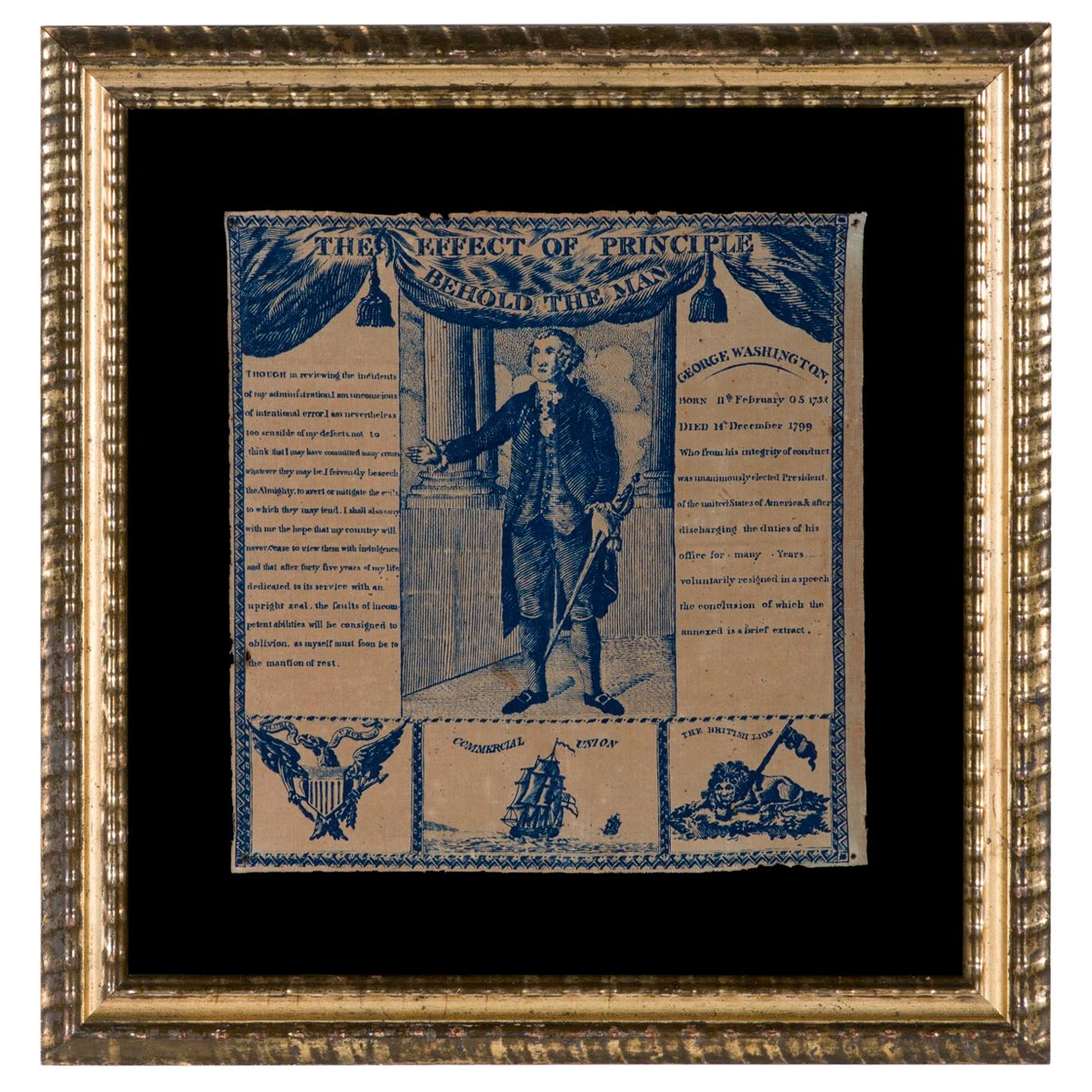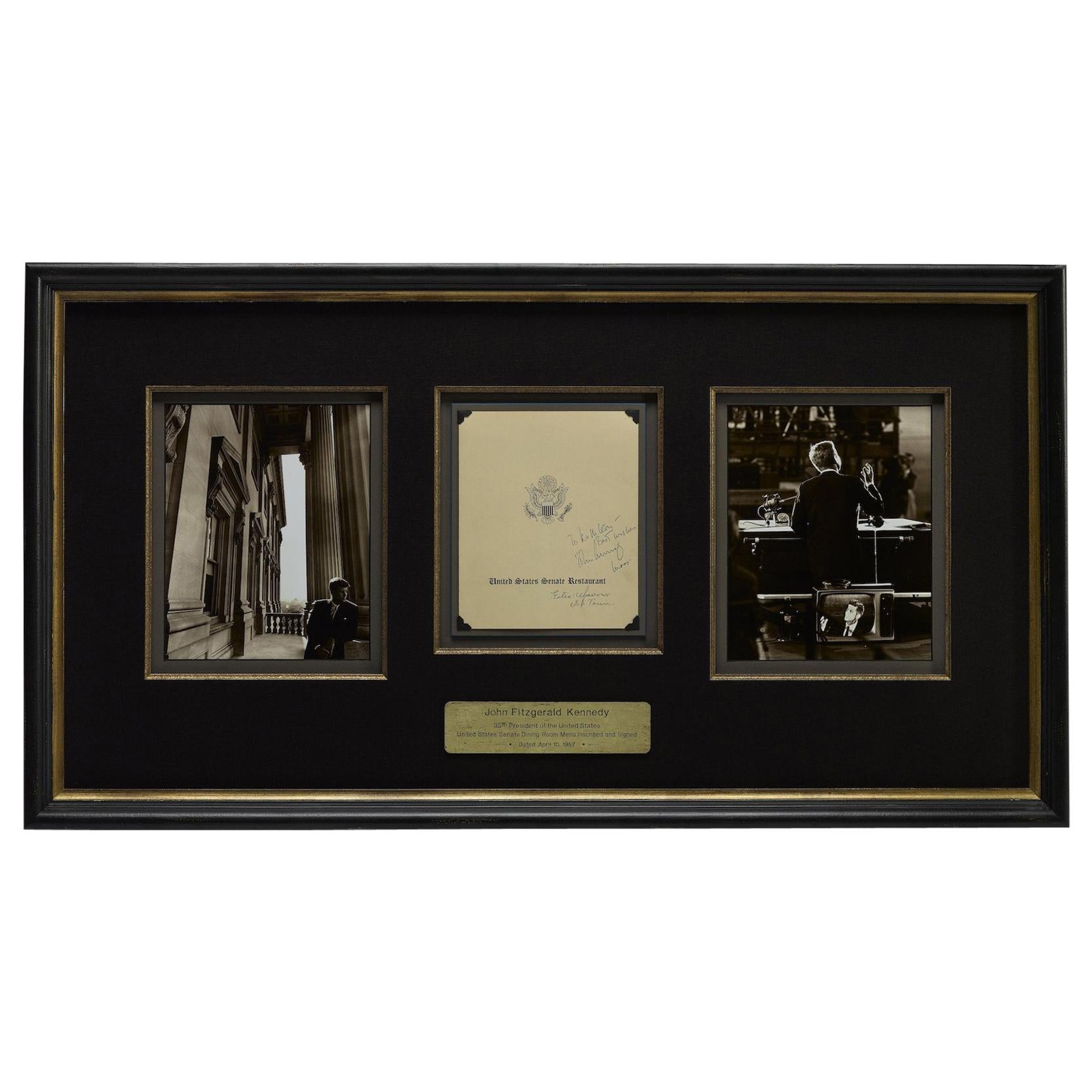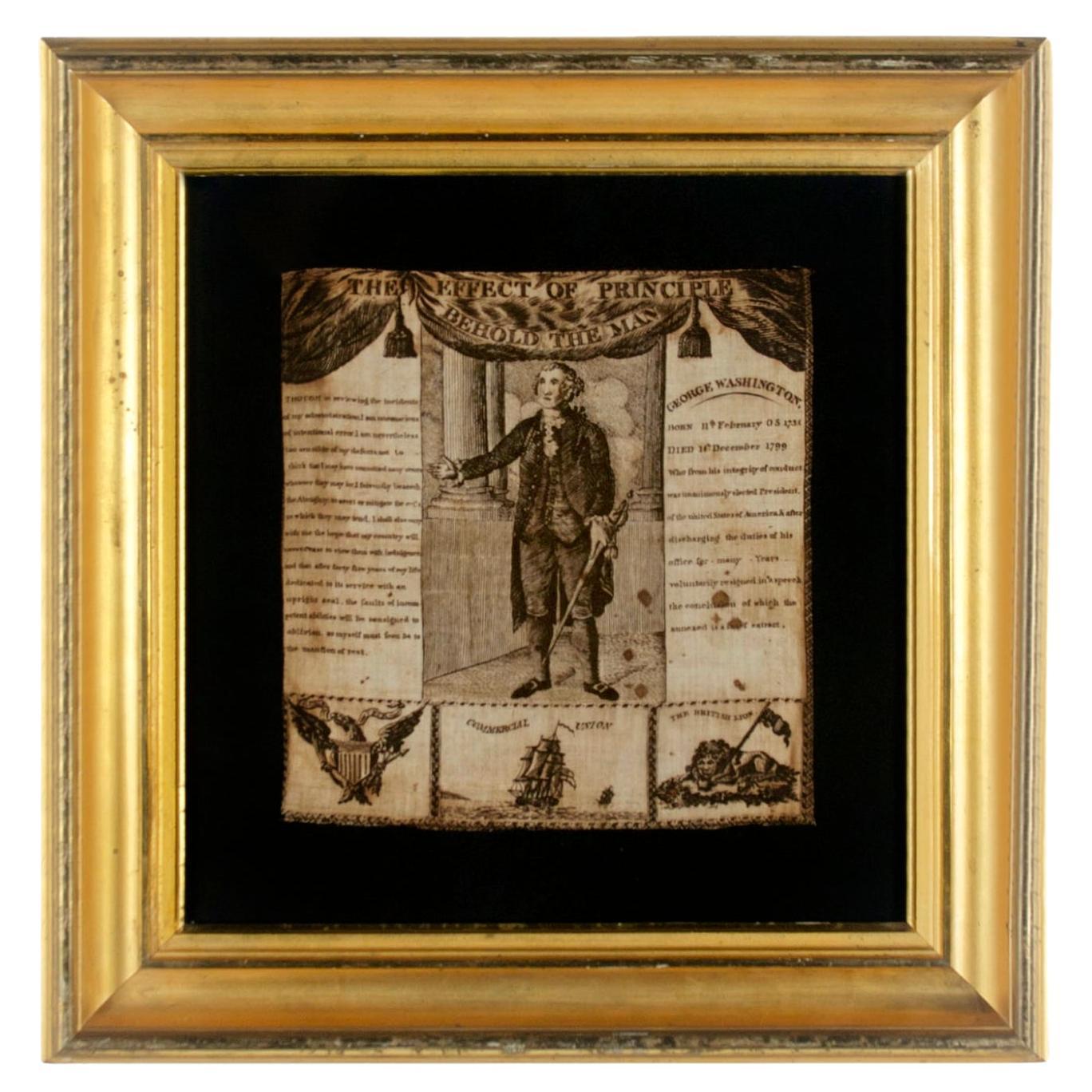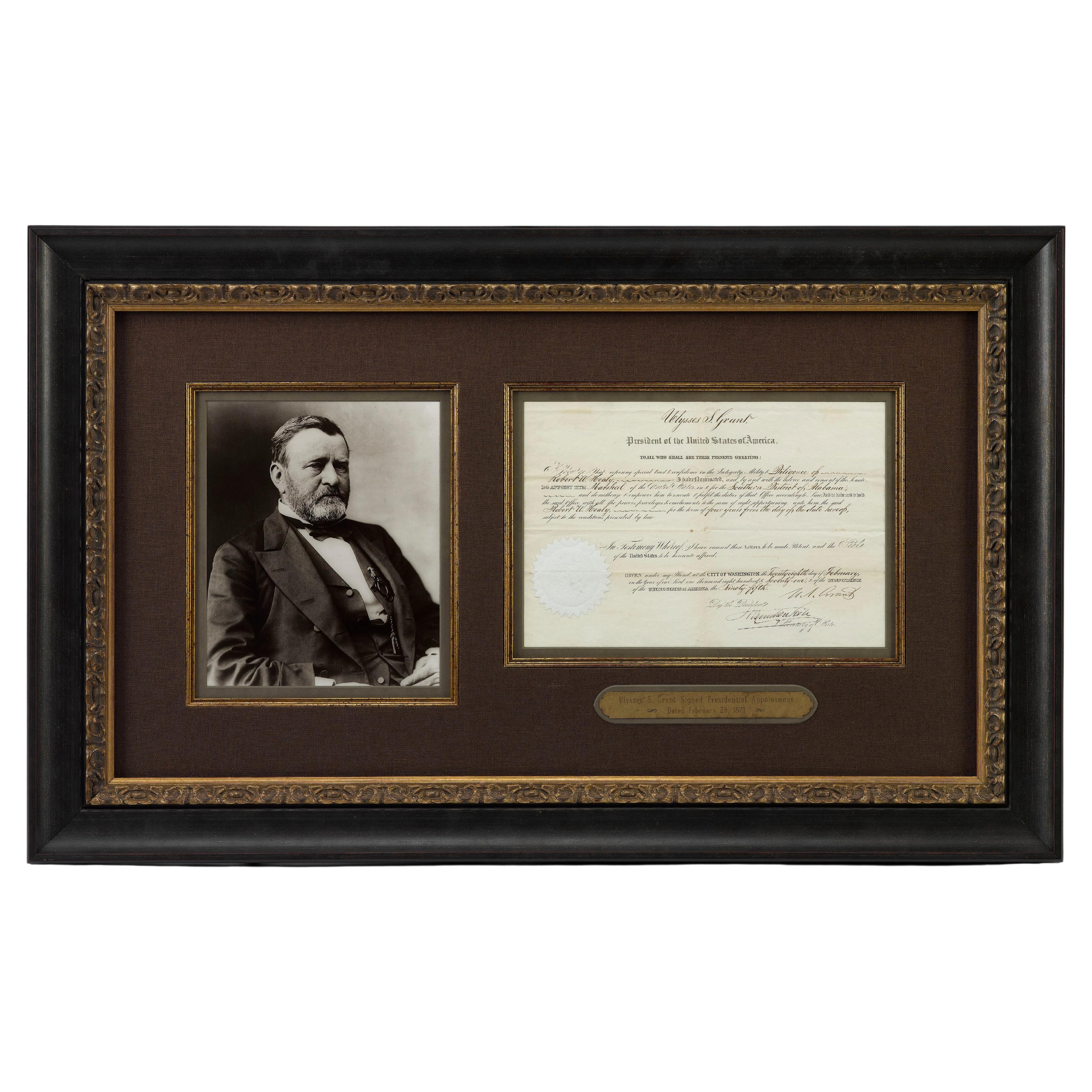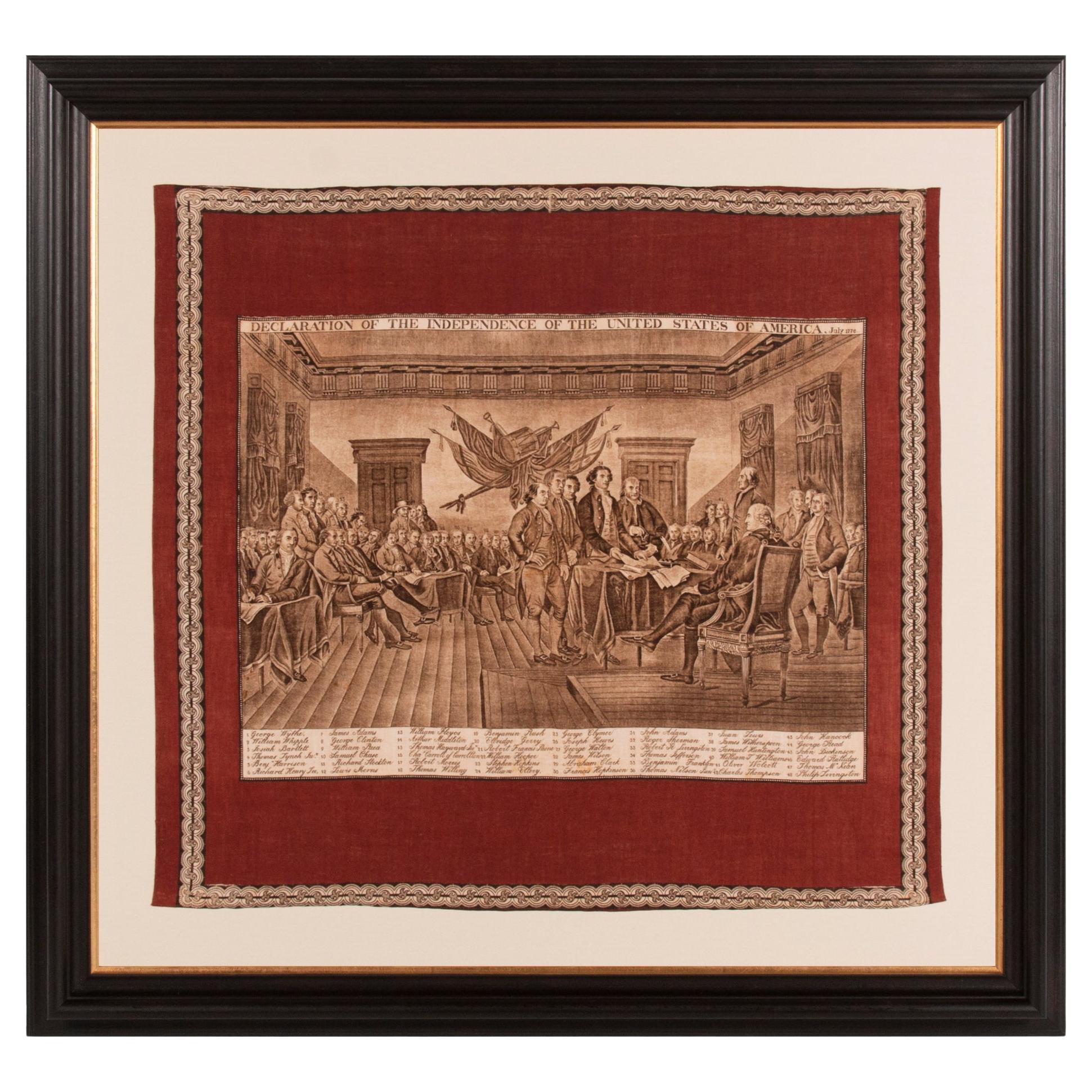Items Similar to George H. W. Bush Signed and Inscribed 1989 Inaugural Photograph
Want more images or videos?
Request additional images or videos from the seller
George H. W. Bush Signed and Inscribed 1989 Inaugural Photograph
About the Item
Presented is a wonderful inscribed color photo of the inauguration of George H.W. Bush as the 41st President of the United States held on January 20, 1989. The inauguration marked the commencement of the four-year term of George H. W. Bush as President and Dan Quayle as Vice President. The photograph is signed and inscribed to Ron Wade, who once served as a White House page for President Nixon. Inscription reads, "To Ron Wade/ Sincerely /George Bush" Mr. Wade then scripted a note on the verso of the photo, stating "Signed as President, week of 6-1/-89".
The inauguration of George H. W. Bush as the 41st president of the United States was held at the West Front of the United States Capitol in Washington, D.C. This was the 51st inauguration. Chief Justice William Rehnquist administered the presidential oath of office to Bush and Justice Sandra Day O'Connor administered the vice presidential oath of office to Quayle. Bush was the first sitting vice president to be inaugurated as president (not due to his predecessor's death or resignation) since Martin Van Buren in 1837 and the last World War II combat veteran.
CONDITION:
Signed George H.W. Bush color photo, signed as "George Bush". Verso of photo has the "Official White House Photograph 20 Jan89" stamp; and a scripted note by Ronald Wade with his address, establishing provenance. Unframed Dimensions: 10” H x 8” W.
- Dimensions:Height: 10 in (25.4 cm)Width: 8 in (20.32 cm)Depth: 0.07 in (1.78 mm)
- Materials and Techniques:
- Place of Origin:
- Period:1980-1989
- Date of Manufacture:1989
- Condition:
- Seller Location:Colorado Springs, CO
- Reference Number:
About the Seller
4.9
Platinum Seller
These expertly vetted sellers are 1stDibs' most experienced sellers and are rated highest by our customers.
Established in 2010
1stDibs seller since 2011
402 sales on 1stDibs
Typical response time: <1 hour
- ShippingRetrieving quote...Ships From: Colorado Springs, CO
- Return PolicyA return for this item may be initiated within 10 days of delivery.
More From This SellerView All
- George H. W. Bush & Barbara Bush Signed PhotographsLocated in Colorado Springs, COThis is a handsome collage of two signed and inscribed photographs of George H. W. Bush and Barbara Bush. Both photographs are inscribed to the same rec...Category
Late 20th Century American Political and Patriotic Memorabilia
MaterialsPaper
- John F. Kennedy Signed Senate Menu CollageLocated in Colorado Springs, COPresented is a John F. Kennedy inscribed and autographed United States Senate Restaurant menu. Kennedy signed the menu on April 10, 1957, when he was a Senator representing the state of Massachusetts...Category
Vintage 1950s American Historical Memorabilia
MaterialsPaper
- Ulysses S. Grant Signed Presidential Appointment, Dated February 28, 1871By Ulysses S. GrantLocated in Colorado Springs, COPresented is an original Ulysses S. Grant signed Presidential Appointment, dating to February 28, 1871. Signed during the first term of Grant's presidency, the document appoints "Robert W. Healy" to the role of "Marshal of the United States in and for the Southern District of Alabama." The appointment is countersigned by "Hamilton Fish" as Secretary of State. The document is partially printed in formal script, and completed by hand in black ink. The document reads in full: “Ulysses S. Grant, President of the United States of America. To all who shall see these presents greeting: Know ye, That reposing special trust and confidence in the Integrity, Ability, and Diligence of Robert W. Healy, I have Nominated, and, by and with the advice and consent of the Senate, DO APPOINT HIM Marshal of the United States in & for the Southern District of Alabama; and do authorize & empower him to execute and fulfill the duties of that Office according to Law. And to hold and hold the said Office, with all the powers, privileges, and emoluments to the same of right appertaining, unto him, the said Robert W. Healy, for the term of four years from the day of the date hereof, subject to the conditions prescribed by law. In Testimony Whereof, I have caused these Letters to be made Patent, and the Seat of the United States to be hereunto affixed. Given under my hand, at the city of Washington, the Twenty eighth...Category
Antique 1870s American Historical Memorabilia
MaterialsPaper
- 41-Star Printed Flag Waver, Celebrating Montana Statehood, 1889Located in Colorado Springs, COPresented is a very rare, 41-star flag waver celebrating Montana statehood. The flag is printed on linen and dates to 1889. The dark blue canton is printed with forty one stars in nine rows of alternating counts of five and four stars. Thirteen red and white stripes complete the flag’s design. The history of Montana statehood is a long one. Numerous Native American tribes originally inhabited the Montana Territory. Meriwether Lewis, William Clark, and the members of their expedition were the first explorers to document a journey through Montana and the lands of the Louisiana Purchase. Soon, forts were established to facilitate regular fur trading with Native American tribes. Missionaries and trailblazers followed. The discovery of gold in the early 1860s sped the creation of the Montana Territory. As settlers and gold prospectors entered Montana in the 1860s and 1870s, conflicts with the Native Americans arose. Perhaps the most famous clash between Native Americans and the United States military occurred in Montana on June 25, 1876. On that day, Sioux and Cheyenne defeated Lieutenant Colonel George Armstrong Custer‘s 7th United States Cavalry regiment at the Battle of the Little Bighorn. A year later, Nez Percé Chief Joseph surrendered in the Bear Paw Mountains of Montana. Lured by copper in the 1880s, mining brought even more settlers to Montana. Rich grazing lands for cattle and sheep attracted other pioneers. Each of the states in America, with the exception of the original thirteen, Texas, and California, was first organized as a territory before achieving admittance to the Union as a state. Originating with the Ordinances of 1785 and 1787, the territorial system provided the expanding U.S. with a method to govern frontier areas until they gained sufficient population and economic maturity to qualify for statehood. Not surprisingly, residents of frontier territories usually demanded quick admission to statehood so they could gain full control of their local governments. Montana was a territory for 25 years – from the creation of Montana Territory in 1864 until the territory was admitted to statehood in 1889. On November 2, 1889, North and South Dakota were added to the Union as the 39th and 40th states, the first time in history that two states were admitted on the same day. Montana became the 41st state on November 8, predating Washington, the 42nd state, by only three days. Flag makers were not in the business of making out-of-date flags. As a result of these rapid changes in the number of states, only a small number of 41-star flags or commemorative items were ever produced, thereby making any 41-star flag exceedingly rare. CONDITION: Good condition. This flag is printed, with a hemmed headband and fly end in a running stitch...Category
Antique 1880s American Political and Patriotic Memorabilia
MaterialsLinen
- Vintage WWII U.S. Navy Patriotic Banner, "Welcome Firemen" Flag, circa 1941-1945Located in Colorado Springs, COThis is a beautifully preserved WWII Navy aircraft carrier banner, emblazoned with a welcome for the ship's firemen. The banner is partially printed and has sewn elements. The flag's field is dyed a rich navy blue, with a resist dyed white stripe and a sewn red stripe at both top and bottom. A large "WELCOME" is resist dyed at center, in big white letters. This is followed by a sewn yellow strip of contrasting fabric, printed with the word "FIREMEN" in blue. Thirteen white stars complete the design of this patriotic piece of WWII and Navy history. The banner retains its original white hoist, with two metal grommets on each side, for ease in display on the ship. Along the center of the hoist is the printed name of "J.S. Sullivan." "Naugatuck, Conn." is printed along the left and the size "2 x3 FT" is printed along the right. The flag maker, Annin, has sewn in its label, boasting "guaranteed defiance fast colors." CONDITION: Very good condition, considering age and past use. Partially printed and hand-sewn flag construction. Some toning to the white of the flag and along the top hoist. Original grommets at left and right of the hoist. The flag measures 36" X 22". Expertly framed on black linen with an antiqued black wood...Category
Vintage 1940s American Political and Patriotic Memorabilia
MaterialsLinen
- 34-Star Civil War American Flag, Antique Great Star Pattern, circa 1861Located in Colorado Springs, COThe stars of this extremely rare, Civil War-era flag are arranged in what is sometimes called the "Great Flower" pattern, a large star made out of smaller stars -- named as such beca...Category
Antique 1860s American Political and Patriotic Memorabilia
MaterialsLinen
You May Also Like
- 1806 Printed Linen Kerchief Glorifying George Washington, Germantown, PennLocated in York County, PAEXTRAORDINARILY EARLY (1806) PRINTED LINEN KERCHIEF GLORIFYING GEORGE WASHINGTON, PRINT WORKS, GERMANTOWN, PENNSYLVANIA Printed in blue ink on coarse, white linen, this patriotic kerchief shows a standing portrait of George Washington, above which is a swag valance and the words “The Effect of Principle, Behold the Man”. The portrait is based on a mezzotint after Gilbert Stuart’s very famous painting of Washington in his later years, most often referred to as the Landsdowne portrait. Stuart painted three versions of it in oil on canvas, one of which was completed in 1796 for a wealthy merchant by the name of William Constable, who commissioned the work for Alexander Hamilton. The kerchief is interesting because it is both American-made and documented. This is exceptionally unusual for any printed textile of the 19th century or prior and the earlier the time period the more unlikely an object is to be identified. This kerchief and a companion piece entitled “The Love of Truth Mark the Boy” (also glorifying Washington, through the fabled story of the cherry tree), were made circa 1806 by Germantown Print Works in Germantown, Pennsylvania. To the left of Washington's image is a portion of his infamous farewell address to his troops at the end of the Revolutionary War. To the right is a short excerpt from his eulogy. Below these are three images. In the center is a square-rigged tall ship with “Commercial Union” above it, flanked by the American eagle on the left and the British lion on the right. It is reasonable to assume that the textile may have been produced in demonstration of the maker's desire, and/or that of others, to advance trade with England. Commercial printers were very influential in early America, as they possessed the means by which to disseminate information. This kerchief and its companion piece are documented in Threads of History, Americana Recorded on Cloth, 1775 - the Present, by Herbert Ridgeway Collins (1979, Smithsonian Press), p. 63, items 38 & 39.* The two pieces pictured are in the collection of Cornell University, but the Collins text also cites an uncut pair to be present in the collection of the Western Reserve Historical Society, Cleveland, OH. The name "Germantown Print Works" is printed on the Western Reserve examples. Another example of the textile in question is documented in "Running for President, The Candidates and Their Images, 1789-1896" by Schlesinger, Israel, and Frendt, (1994, Simon & Schuster), p. 15. I have seen three different color variations of this textile, including sepia, mulberry red, and blue. This particular example has a hand-sewn binding along the top, lower, and left edges. Mounting: The textile was mounted and framed within our own conservation department, which is led by expert staff. We take great care in the mounting and preservation of flags and have framed thousands of examples. The gilded molding has a rippled profile and dates to the period between 1825 and 1850.The background is 100% cotton twill, black in color. The glazing is U.V. protective plexiglass. Feel free to contact us for more details. Condition: There is an all-over golden oxidation of the white fabric and there is very minor staining. There are tiny tack holes in each corner and there are minor nicks around the perimeter. * Collins relates that Germantown Printworks was operated by the Hewsons. In doing so he cites one of Worthington Chauncey Ford's books on George Washington, but it isn't clear which one (there are many) and no page numbers are given. John Hewson was an Englishman who came to America and opened his printing business on the advice of Benjamin Franklin. He was one of the first “calico printers” and is the earliest documented to have advertised printed kerchiefs. His ads for bandanas appear as early as June 20th, 1774. He is suspected of having produced the very first American kerchief that pictured an American president, which is documented in Collins as item 1 on page 48. Linda Eaton, curator at Winterthur, in 2012, is currently doing in depth research on the three printers of fabrics that were operating in Germantown in early America. She discovered that the owner and/or operator of Germantown Print Works, while not currently known, was not John Hewson. This information is not yet published. She also noted that Winterthur possessed examples of the two George Washington textiles...Category
Antique Early 1800s American Political and Patriotic Memorabilia
MaterialsCotton
- Printed Linen Kerchief of George Washington, ca 1806, Germantown, PALocated in York County, PAExtraordinarily early (1806) printed linen kerchief glorifying George Washington, Germantown print works, Germantown, Pennsylvania Printed in sepia ink on coarse, white linen, this patriotic kerchief shows a standing portrait of George Washington, above which is a swag valance and the words “The Effect of Principle, Behold the Man”. The portrait is based on a mezzotint after Gilbert Stuart’s very famous painting of Washington in his later years. Stuart painted it in oil on canvas for a wealthy merchant by the name of William Constable, who commissioned the work for Alexander Hamilton. The kerchief is interesting because it is both American-made and documented. This is exceptionally unusual for any printed textile of the 19th century or prior and the earlier the time period the more unlikely an object is to be identified. This kerchief and a companion piece entitled “The Love of Truth Mark the Boy” (also glorifying Washington through the fabled story of the cherry tree), were made ca 1806 by Germantown Print Works in Germantown, Pennsylvania. To the left of Washington's image is a portion of his infamous farewell address to his troops at the end of the Revolutionary War. To the right is a short excerpt from his eulogy. Below these are three images. In the center is a square-rigged tall ship with “Commercial Union” above it, flanked by the American eagle on the left and the British lion...Category
Antique Early 19th Century American Political and Patriotic Memorabilia
MaterialsLinen
- Large Scale Printed Kerchief of the Signing of the Declaration of IndependenceLocated in York County, PARare, large scale Kerchief with a beautifully engraved image of John Trumbull’s “declaration of independence,” likely made in...Category
Antique Mid-19th Century American Political and Patriotic Memorabilia
MaterialsCotton
- Dutch WWII Caricatures of Hitler, Göring, Stalin, Rooseveld, and ChurchillBy GuustLocated in Haarlem, NLA very remarkable collection of Folk Art caricatures made of Dutch ration 'food stamps.' First caricature portrays a fat Hermann Go¨ring holding a cerem...Category
Mid-20th Century Dutch Historical Memorabilia
MaterialsPaper
- 1862 Civil War Playing Cards with Stars, Flag, Sheilds and EaglesLocated in York County, PA1862 Civil War playing cards with stars, flags, shields, & eagles, and face cards illustrating civil war officers and lady, Columbia, ca 1862, Benjamin Hitchcock, New York 1862 Civil War playing cards with suits represented by stars, flags, shields, & eagles, in lieu of the traditional French suits of hearts, diamonds, clubs, and spades. The face cards feature Union Army officers and Lady Columbia [a.k.a. Lady Liberty, Goddess of Liberty]. Entitled “Union Playing Cards,” two versions of this deck were produced in New York by Benjamin W. Hitchcock’s “American Card Company.” This is the earlier of the two. The other was released in 1863. There are 52 cards in total with the ace of spades doubling as the title card, as was often the case during the 19th century. The telescoping box...Category
Antique 1860s American Political and Patriotic Memorabilia
MaterialsPaper
- Paper Suffrage Pennant with Bold and Whimsical Western Style Lettering, ca 1915Located in York County, PAUnusual paper suffrage pennant, with bold and whimsical, western style lettering, circa 1915 American Suffragette pennant, in a very rare format, with text that reads “Votes for Women,” in a combination of two bold, Western-style fonts. Made of golden yellow paper, with the lettering printed in black, the profile is an unusual one. Linear for approximately 2/5 of its length, the remainder tapers to a point. An example in this style is documented in "The Keynoter: Journal of the American Political Items Conservators," Summer/Fall/Winter 2008 (Women's Suffrage Special Triple Issue), Volume 2008, Number 2-4, p.133. This periodical is the best printed reference that presently exists on Suffrage objects. Golden yellow was the customary color of the suffrage movement in America, a tradition that began with the first actual campaign to give women the right to vote. This took place in 1867 in Kansas, the first state to hold a referendum on the issue when suffragists Susan B. Anthony and Carrie Stanton focused their efforts there and wore sunflowers—the state flower—in a show of support, as well as yellow ribbons. The flower was an appropriate emblem for a rising sun and growth, which led to its use in other states, and the color carried over to many other objects employed in the campaign for years to come. In England, green, white, and purple / violet were introduced in 1908 and became the colors of the movement, which gave way to a nice acronym for “Give Women the Vote.” Various groups used these colors also, in the States, sometimes substituting golden yellow for green. Mounting: The textile was mounted and framed within our own conservation department, which is led by expert staff. We take great care in the mounting and presentation of flags and related textiles and have preserved thousands of examples. This is a pressure mount...Category
Vintage 1910s American Political and Patriotic Memorabilia
MaterialsPaper
Recently Viewed
View AllMore Ways To Browse
6 Day War
Vintage War Memorabilia
Four Vices
George Bush Signed
Presidential Memorabilia
State House Inaugural
Sandra H
George Washington Memorabilia
Last Combat
William Ronald
William Conor
Presidential Nixon
World War 1 Memorabilia
George Washington Stamp
George Washington Stamps
Oath Of The
Martin Van Buren
Ron Nixon

